Digital Poster
MR Fingerprinting
ISMRM & ISMRT Annual Meeting & Exhibition • 10-15 May 2025 • Honolulu, Hawai'i

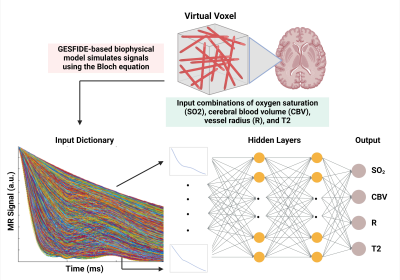 |
Computer Number: 1
2731. Deep
Learning-Based MR Vascular Fingerprinting for Dynamic
Quantification of Cerebral Hemodynamics During Gas Challenges
C-T Lin, L. Le, T. Christen, A. Fan
University of California, Davis, DAVIS, United States
Impact: We demonstrate that deep learning-enhanced MRvF
offers improved accuracy in quantifying cerebral oxygenation
dynamics compared to dictionary matching. By testing
differences during controlled gas challenges, we show
expected range and dynamics of vascular parameter
quantifications for understanding underlying brain health.
|
|
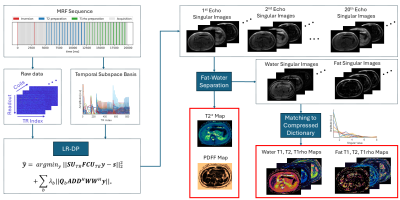 |
Computer Number: 2
2732. Kidney
T1, T2, T2*, T1rho, and PDFF Mapping at 1.5T Using Rosette MRF
with Dictionary-Patch Based Regularization
T. Griesler, E. Cummings, S. Kaplan, J. Hamilton, M.
Davenport, N. Seiberlich, G. Cruz
University of Michigan, Ann Arbor, United States
Impact: An expanded rosette MRF protocol with spin-lock
preparations for T1rho mapping, together with
dictionary-patch regularized reconstruction, provides a
multi-parameter quantitative evaluation of kidney health,
potentially improving diagnostic accuracy for diffuse kidney
disease.
|
|
 |
Computer Number: 3
2733. 3D
Free-breathing T1, T2, T2* and PDFF mapping in the kidneys with
Dictionary-Patch regularized Low Rank Motion Corrected Rosette
MRF
G. Cruz, E. Cummings, T. Griesler, J. Hamilton, V. Gulani,
M. Davenport, N. Seiberlich
University of Michigan, Ann Arbor, United States
Impact: 3D mapping of T1/T2/T2*/PDFF over the whole
kidney is feasible with the proposed LRMC-DP in a single ~9
minute free-breathing scan. This method could enable
objective characterization of focal diseases in the kidney,
such as the classification of indeterminate masses.
|
|
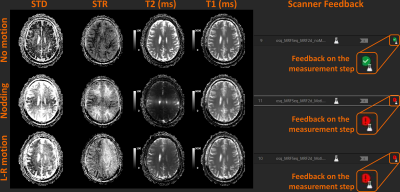 |
Computer Number: 4
2734. Scanner
integrated motion detection feedback for MRF using a scan
assistant interface for streamlined clinical workflow.
B. Mehta, S. Camejo, G. Koerzdoerfer, D. Franger, G.
Buonincontri, N. Aida, A. Kato, T. Kluge, K. Murata, H.
Meyer, R. Schneider, M. Nittka
Siemens Healthcare Pvt. Ltd., Bengaluru, India
Impact: Automated, workflow-integrated motion-detection
would help relieve the burden on the professionals, reduce
loss of clinical information, and improve scanning
efficiency, thereby, simplifying the workflow. It
contributes and hopefully motivates researchers to push
towards autonomous scanning, thereby, democratizing
availability of MRI.
|
|
 |
Computer Number: 5
2735. Improved
Precision for Measurements of Tumor Vascular Perfusion with
Dynamic Contrast Enhanced- Magnetic Resonance Fingerprinting
(DCE-MRF)
C. MacAskill, Y. Zhu, B. Erokwu, G. Wang, M. Kavran, C. Wu,
C. Dhakan, X. Yu, M. Pagel, C. Flask
Case Western Reserve University, Cleveland, United States
Impact: Dynamic Contrast Enhanced MRI methods to measure
tumor vascular perfusion rates are highly variable and thus
rarely used in clinical practice. The proposed T1-only
DCE-MRF acquisition provides assessments of vascular
perfusion with significantly improved precision.
|
|
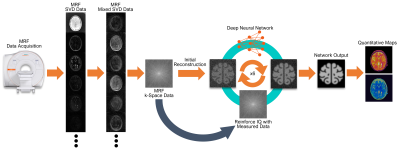 |
Computer Number: 6
2736. Deep
Learning Enhanced 3D MR Fingerprinting Using Randomized SVD
Projections for Robust Denoising
W-C Lo, R. Boyacioglu, A. Dupuis, B. Clifford, Y. Chen, S.
Cauley, M. Griswold
Siemens Medical Solutions, Boston, United States
Impact: This study provides a novel approach to enhance
MRF through advanced denoising techniques, potentially
improving diagnostic accuracy and clinical outcomes in
quantitative magnetic resonance imaging.
|
|
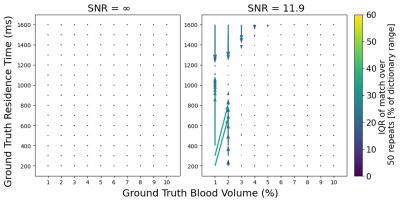 |
Computer Number: 7
2737. In
silico evaluation of multi-contrast MR fingerprinting for
quantification of blood-brain barrier water exchange
E. Kanani, E. Thomson, E. Powell, G. Parker
University College London, London, United Kingdom
Impact: Preliminary simulations indicate that using
multi-contrast MRF for water-exchange measurements improves
sensitivity to intravascular residence time, yielding the
potential for enhanced quantification of BBB permeability.
Further optimisation and noise reduction will
further improve matching accuracy.
|
|
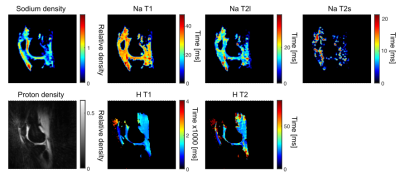 |
Computer Number: 8
2738. Repeatability
of simultaneous 1H/23Na MR fingerprinting in knee cartilage at 7
T
A. Adlung, D. Martel, B. Busi, G. Rodriguez, T. Kirsch, A.
Ruiz, G. Madelin
New York University Grossman School of Medicine, New York, United States
Impact: This is the first simultaneous acquisition of
multinuclear MRF in knee cartilage at 7T. The pilot study
indicates repeatability of measuring sodium and proton spin
densities and relaxation times.
|
|
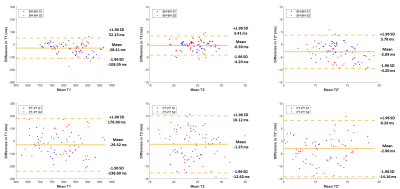 |
Computer Number: 9
2739. Multi-Scanner
Repeatability and Reproducibility of quadratic RF phase MRF
Breath-held and Free-breathing with Pilot Tone
M. Kretzler, E. T. de Oliveira Correia, J. Sun, C. Flask, M.
Griswold, R. Boyacioglu
Case Western Reserve University, Cleveland, United States
Impact: The independence of qRF-MRF fidelity, despite
repeat scans or different scanner usage, is important for
adopting into a clinical workflow. This study demonstrates
this through the repeatability and reproducibility of
breath-hold qRF-MRF and free-breathing qRF-MRF with pilot
tone (PT).
|
|
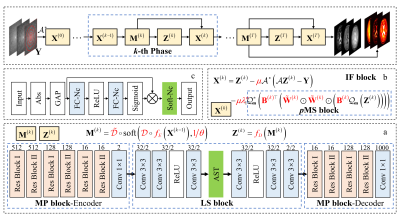 |
Computer Number: 10
2740. Deep
Unrolled MR Fingerprinting Reconstruction with Intrinsic
Manifold Structured Data Priors
Y. Ji, P. Li, Y. Hu
Harbin Institute of Technology, Harbin, China
Impact: By further incorporating the manifold structure
priors along with the data priors in the parameter domain,
our method can provide more accurate tissue quantification.
|
|
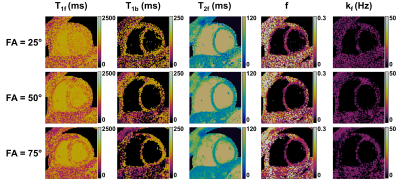 |
Computer Number: 11
2741. Quantitative
Magnetization Transfer Mapping using Cardiac Magnetic Resonance
Fingerprinting at 0.55T
S. Kaplan, Z. Liu, J. Hamilton, S. Malik, N. Seiberlich
University of Michigan, Ann Arbor, United States
Impact: By modeling the effects of MT in cardiac
Magnetic Resonance Fingerprinting, accurate measurements of
the relaxation properties of free and bound water pools can
be made, which may provide additional insight into the
macromolecular make-up of the myocardium.
|
|
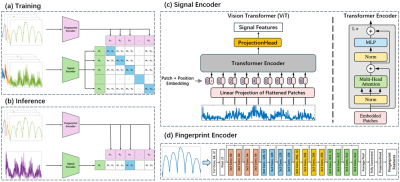 |
Computer Number: 12
2742. Contrastive
Learning for Accelerated MR Fingerprinting
P. Huang, B. Eck, M. Yang, R. Liu, X. Zhang, X. Li, L. Ying
University at Buffalo, Buffalo, United States
Impact: The CLIP-MRF network enables accurate parameter
mapping and improves computational efficiency for
accelerated MRF. Trained on simulated data only, the network
offers robust generalization across signals with different
noise/artifacts, paving the way for fast and reliable tissue
quantification.
|
|
 |
Computer Number: 13
2743. Comparing
accelerated and conventional methods for brain T2 mapping: a
quantitative NIST/ISMRM phantom study.
J. Allen, J. Smith, S. Wastling, M. Arridge, A. Papadaki, L.
Mancini, I. Dragonu, T. Hilbert, J. Thornton, T. Yousry, D.
Thomas, M. Grech-Sollars
University College London, London, United Kingdom
Impact: Characterising rapid brain T2 mapping methods
towards evaluating their clinical feasibility and potential
to increase sensitivity to pathology compared to current
clinical practice. This would aid patient-specific treatment
by identifying subtle pathology and informing intervention
decision-making.
|
|
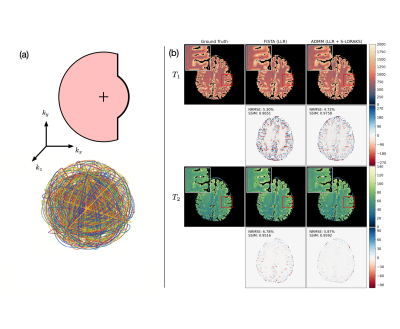 |
Computer Number: 14
2744. Consensus
ADMM for Distributed, Constrained Reconstruction with Low-Rank
Subspace and Phase Priors
M. Nishimura, D. Abraham, C. Liao, X. Cao, S. Vasanawala, J.
Pauly, K. Setsompop
Stanford University, Stanford, United States
Impact: By adding more sophisticated prior knowledge to
the reconstruction, we can further accelerate the scan,
shortening scan times while maintaining quality.Our
techniques are also quite general and apply broadly to a
wide variety of reconstruction problems.
|
|
 |
Computer Number: 15
2745. Hyperpolarized
Carbon-13 Magnetic Resonance Fingerprinting in Normal Brain
C. Wang, H-Y Chen, A. Bennett, X. Liu, R. Bok, D. Vigneron,
P. Larson
University of California, San Francisco, San Francisco, United States
Impact: For the first time, we demonstrated novel
approach to reliably measure pyruvate-to-lactate metabolism
at 4x higher resolution over most advanced existing
methods. These improvements may benefit detection and
characterization of pathology, including brain cancer,
dementia, aging, autoimmune diseases, and inflammation.
|
|
 |
Computer Number: 16
2746. Optimized
3D T2-prep MRF for accurate T1 and T2 maps, with B0 and B1 field
inhomogeneity correction and motion correction
Z. Zhou, X. Cao, N. Wang, C. Liao, M. Nishimura, Y. Lin, K.
Setsompop
Stanford University, Stanford, United States
Impact: The improved T2 quantification accuracy and
robustness to motion artifacts and field inhomogeneities
could significantly enhance the reliability of MRF in both
clinical and research settings.
|
The International Society for Magnetic Resonance in Medicine is accredited by the Accreditation Council for Continuing Medical Education to provide continuing medical education for physicians.